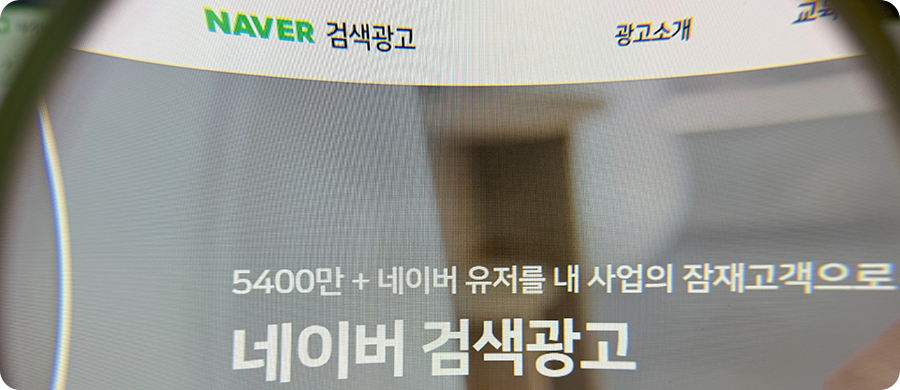
While Naver Search Ads and Google Search Ads operate on fundamentally similar principles, they differ significantly due to their respective platform characteristics and advertising environments. Following Overture's withdrawal from the Korean market, the vast majority of search advertising in Korea was centered around Naver until as recently as 2020. Search ads on other engines (Daum, Google, Nate, Zum) held little significance. However, in recent years, as Google's search share, particularly on mobile devices, has risen to a certain level, there's been a shift in search advertising budget allocation. It now appears to be rebalanced to roughly a 7:3 ratio, Naver to Google. This article will delve into the overall search advertising strategies employed by these two search engines, rather than focusing on detailed operational aspects of the ads themselves.
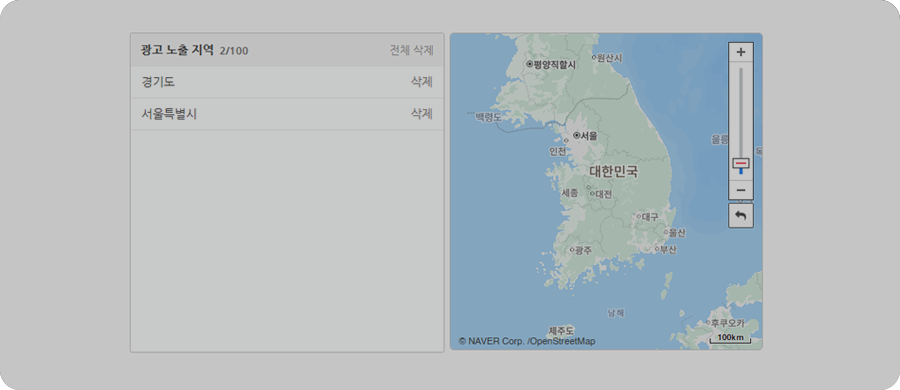
While mobile searches on Google have undeniably increased recently, Naver continues to dominate the South Korean search market with over 70% market share. Notably, Naver is heavily searched by users aged 30 and above, a demographic with actual purchasing power. Therefore, if you're planning a search ad campaign targeting the Korean market, Naver will be your most crucial channel. Google, on the other hand, boasts over 90% search market share globally. Although its individual country market shares may vary, Google allows for easy simultaneous execution of global search ad campaigns targeting various countries. We sometimes get asked if there are other search engines for global advertising besides Google in Korea. The answer is no, with the exceptions of Korea (Naver), Russia (Yandex), and China (Baidu), there are no other major search ad platforms globally besides Google.
Search behavior is a deeply ingrained habit and doesn't change easily. Despite Google's global dominance, it has been a lack of presence in Korea. Even with its recent increase in search share, Google's ad performance in Korea still doesn't match Naver's. Consequently, if you have a limited budget and need to run a search ad campaign targeting Korea, focusing solely on Naver is the correct approach.
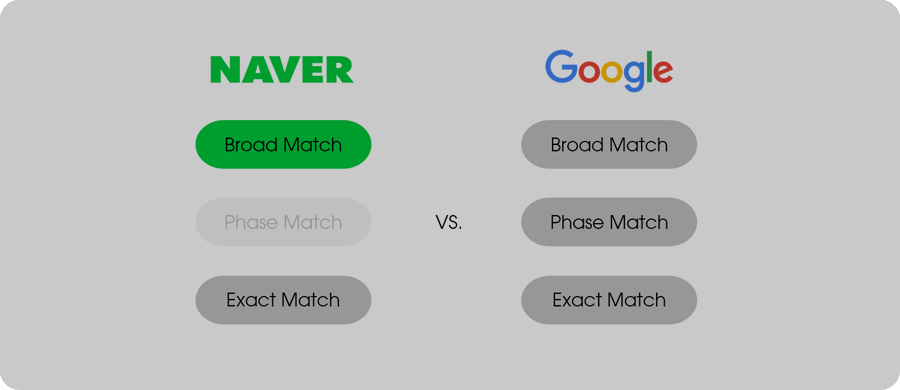
The fundamental principle of search advertising is to display ad creatives based on keywords (queries) users enter into a search bar. This is why, in the early days of the internet, it was simply called keyword advertising. The keyword matching method can actually vary depending on overall search market share or the search volume for a particular keyword. For instance, Naver historically focused on gradually increasing bidding competition (CPC) to boost overall ad platform revenue, while Google employed a strategy of increasing the number of matches through broad match to drive up its overall AD revenue. Naver maintained an exact match-based keyword matching type for its search ads for a long time. However, in 2024, it introduced a new keyword matching method called broad match (ADVoost), which it plans to fully implement starting in 2025. One of the reasons Naver is shifting from exact match to broad match is likely due to the changing behavior of users, who are moving from searching to discover. This shift has led to a general slowdown in overall search volume and frequency.
Paradoxically, feeds on various digital channels recommend content to users even before they develop curiosity, which doesn't help for search in the long run. Google, on the other hand, has long applied its advertising policies based on broad match, with the option to use phrase match or exact match as needed. Because of its broad match option, Google also offers a negative keywords option. In contrast, Naver, being exact match-based, didn't really need this option until now.
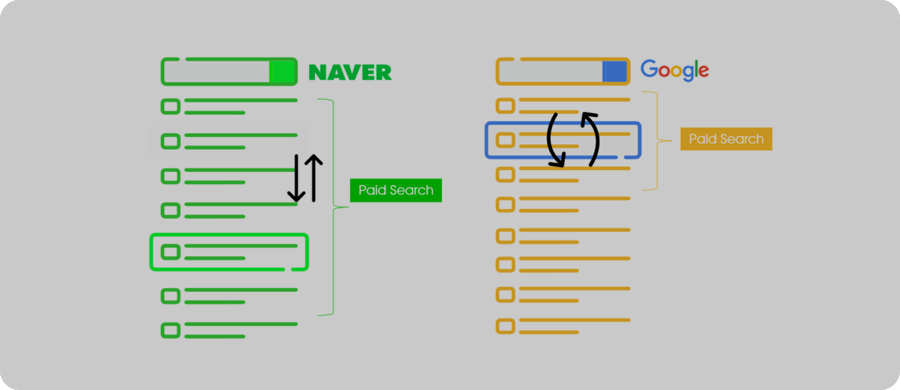
On Naver, search ads, primarily known as Powerlink, are prominently displayed at the top of both desktop and mobile search results. The challenge, however, lies in mobile. With fewer ad listings appearing on mobile compared to desktop, brings intensive competition, driving up higher CPC (Cost Per Click) on mobile devices. This, coupled with the generally higher search volume on mobile, makes it difficult for advertisers to achieve their desired ROAS (Return On Ad Spend). Similarly, Google displays ads in sponsored links at the top or bottom of its results. However, Google's ad placements aren't static. Even for the same keyword, the display position of an ad can quickly change based on relevance with each new search. This dynamic logic encourages users to click on different ads, leading to increased ad spend. In contrast, a significant issue with Naver's search ads is that once a bid is set, the ad's display ranking rarely changes; it remains largely fixed. This often results in rapidly escalating bid amounts and ad spend for major keywords.
The fact that top-ranking search ads are predominantly determined by bidding and tend to maintain a fixed position inevitably leads to unnecessary competition for certain key keywords. This can ultimately result in absurd scenarios, such as the one described below.
Mr.Lee, CEO of the victim company : "We reported suspected invalid clicks to Naver several times. Our in-house programmer took all technical measures to block invalid clicks, but it didn't work." Police investigation revealed that a competitor patent firm induced clicks to harm Mr. Lee's company. They set up a shell company, advertised for website development personnel, and then contacted applicants, asking them to search for "trademark registration" and view Mr. Lee's company's website design. It was found that over 10,000 job seekers were unknowingly mobilized for fraud clicks. - KBS News 2024.10.25
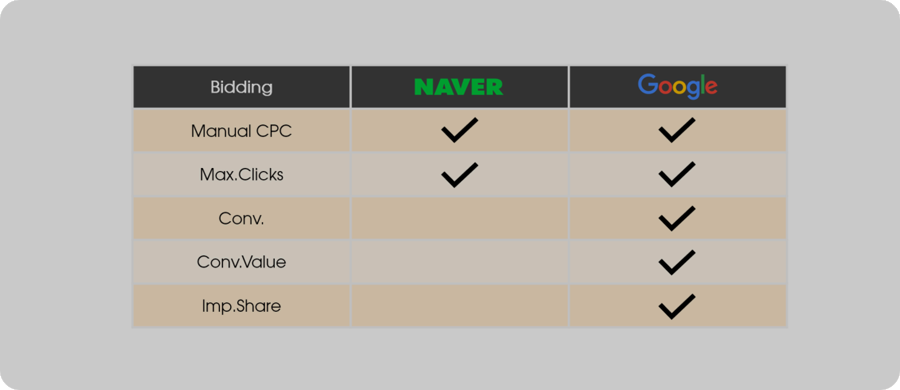
One of the primary reasons for the issues discussed above stems from the bidding methods that most significantly influence search ad ranking. Unfortunately, Naver's bidding system currently relies solely on CPC (Cost Per Click).
Google, on the other hand, offers a diverse range of bidding strategies beyond the traditional Manual CPC. These include automated options like Maximize Clicks, Maximize Conversions, Maximize Conversion Value, and even Target Impression Share for brand awareness. This variety allows multiple advertisers bidding on the same keyword to pursue different objectives, leading to greater efficiency across the entire search ad market, beyond just basic ad relevance. Different bidding methods prevent a single advertiser from dominating ad placement simply by raising their CPC. They also allow for a rapid change in the frequency with which ad creatives are displayed each time a user searches, which helps to mitigate excessive competition for specific keywords.
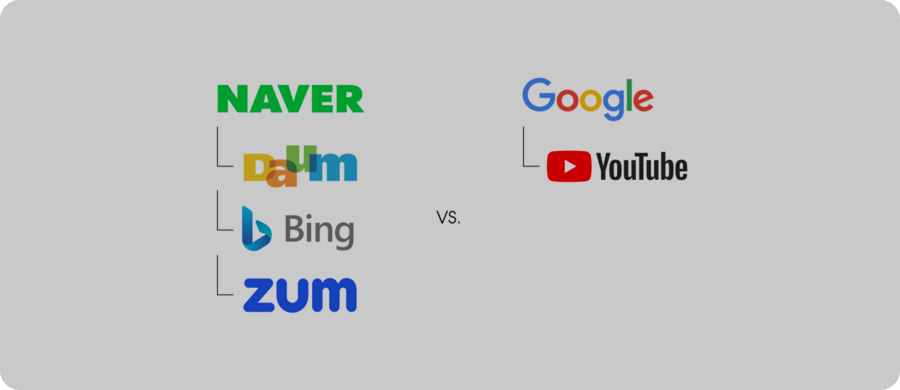
Naver displays search ads not only within its own search results but also through partnerships with various external websites. This includes other search portals like Daum, Bing, and Zum, as well as content platforms such as Naver Blog, Naver Cafe, and other external media outlets.
Similarly, Google shows search ads not only on its own search results (Google Web Search, Google Image Search, Google Maps, Google Play, Google Shopping) but also through basic search partners like ASK and Amazon. However, in South Korea, the most powerful platform among these is likely YouTube. Ads appearing in Youtube results can be display (banner/video) ads managed through Google Ads, but most are in fact search ads that appear when the "Google search partners" option is selected within Google Search Ads. Therefore, when setting up Google Search Ads, it is strategically important to select the search partners option to ensure exposure on YouTube's search platform.
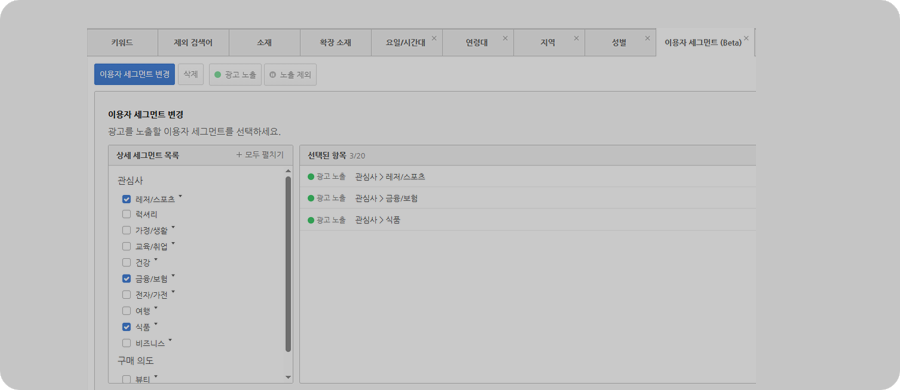
In the past, Naver's targeting options were quite limited, primarily offering geo-targeting, day-parting, and device targeting. However, in recent years, Naver has significantly expanded its capabilities, adding audience targeting based on age and gender. More recently, it's introduced segment targeting, allowing advertisers to target users based on their interests. Google, on the other hand, has long offered sophisticated targeting options beyond the basics. This includes audience targeting and remarketing through Google Analytics, as well as more granular targeting through its integration with other Google display ad products.
One of Naver's most significant recent changes is the integration of its ad accounts between search and display. This move aims to boost ad performance by linking previously neglected display ads with search ads. This strategy is likely an effort to shifting advertising budgets that have been flowing towards YouTube back to the Naver platform.
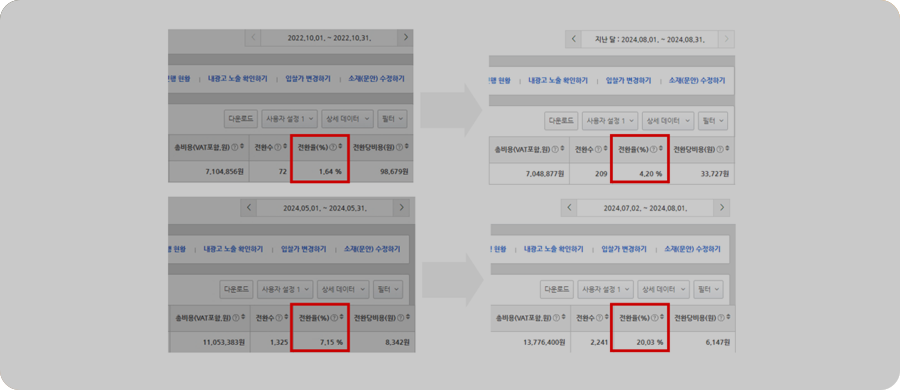
Based on past experience with several advertisers, Naver still has a considerable lead in conversion rates, CPA, and ROAS compared to Google. While it may vary by industry or category, if Naver's CPA is, for example, 10,000 KRW, Google's can be relatively higher, around 50,000 to 100,000 KRW.
The biggest reason for this is that for brand keywords, which account for the largest portion of conversion rates, Naver's Brand Search Ad product can block competitors' exposure in advance. Also, if the relevance between the keyword and the landing page is very low, it's fundamentally impossible to run search ads on Naver. Specifically, for long-tail keywords, which tend to have good conversion rates, Naver can cover them at a very low cost. In contrast, Google allows competitors to bid on brand keywords, and the Broad Match system inherently leads to higher CPC. Therefore, while large e-commerce businesses or major advertisers with substantial ad budgets may need to run Google search ads in addition to Naver, if the monthly budget is less than 10 million KRW, focusing on Naver might be more beneficial, excluding some specific keywords. While excessive competition for certain keywords is clearly Naver's biggest drawback, Google Ads are fundamentally complex in their design, meaning general users new to them will likely experience many trial and error attempts if they try to manage them directly.
Naver also operates a separate page for reporting inappropriate ads. For instance, if a competitor's search ad is appearing under your brand keyword in an irrelevant manner, you can report it using the provided form, and it will be immediately blocked.
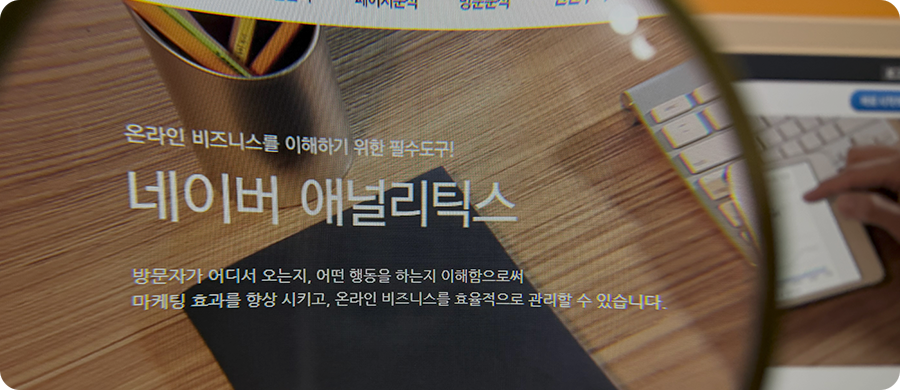
Since 2013, Naver has provided Naver Premium Log Analysis to advertisers through its subsidiary, NHN Data (formerly NHNACE - AceCounter). This allows for conversion and performance measurement within the ad platform. However, the conversion setting process still feels very manual and requires manual verification, reminiscent of the 2000s, which suggests room for improvement. A few years ago, the shock I felt when setting up TikTok conversions was that even Google and Meta seemed behind. TikTok's conversion setup was automated enough for even a general user to manage. Google acquired Urchin in 2005 and launched Google Analytics, which not only provides web analytics but also enables advanced ad targeting through integration with search ads. Additionally, it offers GTM (Google Tag Manager), a tag manager that efficiently manages ad tags, and Looker (formerly Google Data Studio), which provides custom dashboards.
Personally, I'm still puzzled why Naver cannot be uniquely connected to Looker Studio. I believe it would be beneficial to boldly provide such a feature for the convenience of ad users. Accurately understanding data ultimately means creating more ad efficiency, and convenience for advertisers is also a fundamental factor that encourages them to spend more on Naver.